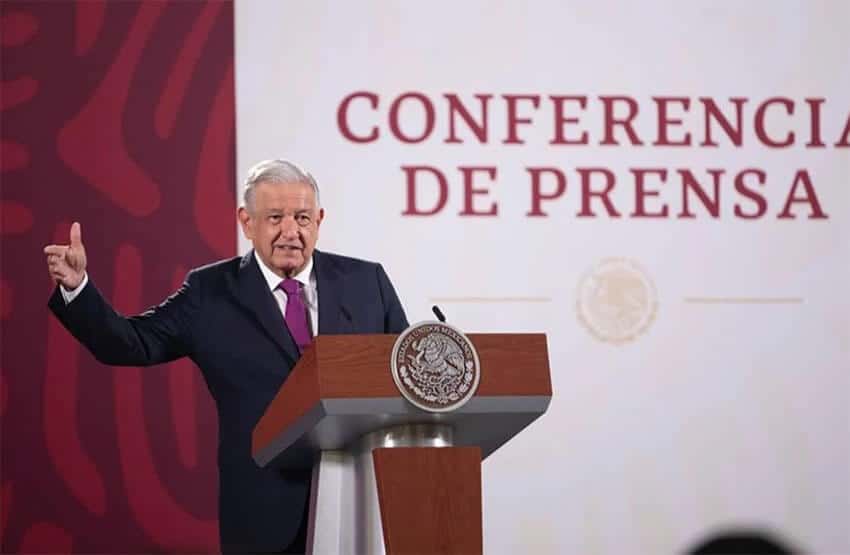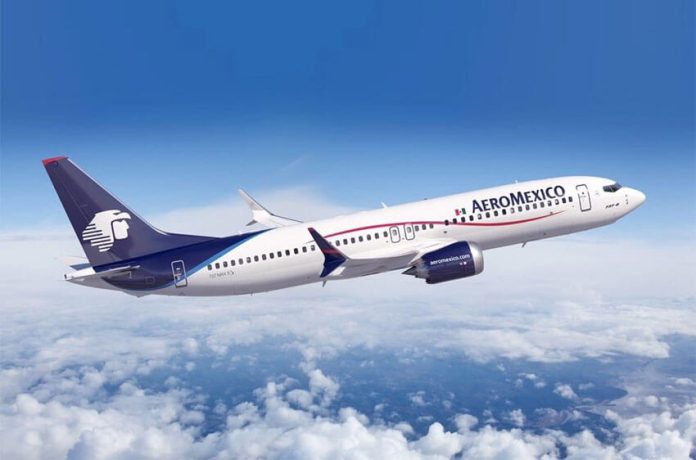President López Obrador revealed Wednesday that he had asked Aeroméxico to increase the number of flights it operates from the new Felipe Ángeles International Airport (AIFA) and extended the same invitation to VivaAerobús and Volaris.
He told reporters at his regular news conference that he spoke to Aeroméxico president Eduardo Tricio on Tuesday and enlisted his help on the matter.
“He told me they had already added one [flight] to [Puerto] Vallarta and that they had one to Villahermosa … but there weren’t a lot of passengers in the case of Villahermosa,” López Obrador said.
“I told him it’s because that flight leaves very early. The return flight – I also have my information – does bring enough passengers,” he claimed, adding that the Aeroméxico flight to Mérida is doing very well.
Data from the Federal Civil Aviation Agency doesn’t back up his claim about the flight from Villahermosa to the AIFA. It shows that an average of just 20 people per flight have flown on the AIFA-Villahermosa route, with average numbers slightly above that figure on flights to the Tabasco capital and slightly lower on services to the new facility.

Aeroméxico consequently announced it would reduce the frequency of the flight, which began as a daily service when the AIFA opened just over a month ago.
López Obrador revealed that his motivation for asking Aeroméxico to add more flights was – at least in part – to ward off criticism about the low number of services to and from the airport, a project he chose to pursue after canceling the previous government’s larger, more expensive Mexico City airport project, which was under construction in Texcoco, México state.
“I asked him to increase [flights], to help us, so [people] are not questioning and attacking [us],” he said.
“Besides, it’s a good airport, it [represents] the effort of a lot of people, it’s the image of our country so I have to look after it – it’s part of my job,” López Obrador said.
He then called on VivaAerobús and Volaris – each of which is currently operating services from the AIFA to two domestic destinations – to add additional flights because the Mexico City International Airport (AICM) “is already full.”
López Obrador said he stressed to Tricio that the longer travel time to the AIFA from central Mexico City – a journey of some 50 kilometers – is offset by faster check-in times. He also highlighted that new highway infrastructure and a rail link will reduce travel time to the new airport once they have been completed, something which is expected to occur in 2023.
“We’re going to ensure that more airlines arrive, that there are more flights,” to and from the AIFA, the president pledged, adding that the government is also pushing for more flights out of the Toluca airport, which hasn’t received any commercial passenger flights for over nine months.
“With these three airports we already have the infrastructure that is needed” to meet demand for air travel in the greater Mexico City metropolitan area, López Obrador said, referring to the AIFA, the AICM and Toluca.
“A problem we inherited is already solved. … The Texcoco airport thing was a challenge … [but] we relieved ourselves of that burden and now it’s a matter of adjusting things to move forward,” he said.
With reports from El Universal and Tabasco Hoy
